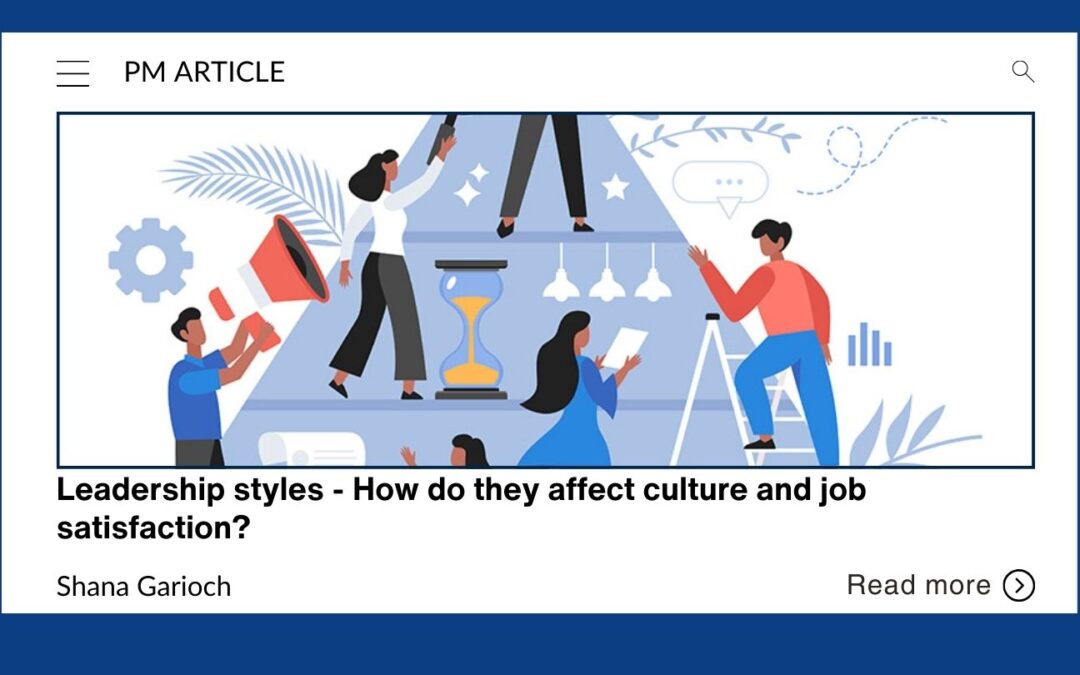Effective leadership styles play a crucial role in retaining talent within the workplace. When leadership changes occur, it brings a level of uncertainty which can often lead to feelings of stress and anxiety, playing a significant role in staff mental health and wellbeing.
While leadership transitions are a normal part of professional life, these feelings can affect job satisfaction and overall performance. The whole experience becomes more challenging when the change in leadership also impacts the company’s culture.
New leadership can change the whole dynamic of a firm and upset the structure of once harmonious teams, bringing changes that no one is prepared to accept or see value in.
Good leaders will maintain once-established healthy and positive cultures. They will understand that success is a team sport. Leaders should recognise that it is the people not the leaders who are in charge of the results. If your leadership is affecting the culture, then this cycle will undoubtedly be broken, resulting in a loss of talent.
A new leader will come with their own vision and hunger to change processes and structures, putting their stamp on the role to impress senior management teams and sometimes forgetting the fundamental philosophy of leadership – it’s all about people.
Once you are a leader, you may no longer be responsible for doing the job you once had – you are now responsible for inspiring, coaching, mentoring and motivating your team to produce their best work. You become the communicator and a listener, and you must be able to read people’s emotions and body language and fundamentally understand non-verbal communication.
Changing workplace culture can be detrimental to your team, as culture roots the company’s core values, defines how people behave and fit within the company and provides a base for understanding if your personality suits that culture and vice versa. Culture is one of the most critical elements contributing to employee satisfaction and happiness. Upsetting a long-lasting culture will undoubtedly disrupt the dynamics.
Employees can feel threatened and off track with multiple unexpected changes. Their once-established role in the workplace, often taking years to build, has a new meaning. You have a new job description, new line management, or even, sometimes, a non-existent one, or a total lack of communication. All these elements affect their value, motivation, empowerment, and job satisfaction.
No employee stays in a role where their actions go unnoticed by individuals who are never satisfied. Building a robust team and empowering their work is crucial to effective leadership.
Toxic environments
When we speak about toxic work environments, we are not necessarily talking about bullying or confrontation but constant levels of stress, a never-ending sense of pressure, lack of support and poor communication, where clarity is rare.
A combination of these factors suddenly becomes part of the culture, making employees feel like they are working hard for something they no longer believe in, causing a higher level of anxiety and stress to themselves and their teams.
Toxic behaviours are usually shown in passive-aggressive written communications, lack of trust, lack of empathy, and manipulative behaviours, which can be experienced by individuals in different teams and often go unnoticed by other colleagues.
The changes in culture, behaviours and procedures catalyse the employee’s decision to leave. Combined with a challenging managing style, it’s a recipe for disaster
Recruiters often say that finding the best people is challenging and proclaim that employers, together with their marketing teams, must build a strong and visible brand to help attract the best candidates. However, in my opinion, having the right leadership is more important than having a solid brand. Be careful who you work for and be selective during the process – avoiding disrespect, belittlement, unreasonable pressure to get short-term results at the expense of the long-term strategy, inequity, unfairness, favouritism, injustice, harassment, bullying, lack of empathy, appreciation, or support, and excessive control, known as micromanagement.
In an environment like this, a grand vision will never be implemented. In my opinion, it’s a matter of time until it all collapses. However, on many occasions, the c-suite is unaware or bothered about what happens behind the scenes. It’s an ‘if it’s not affecting me, nothing is happening’ approach.
Great leaders fix toxic cultures. They empower, involve, trust, listen, appreciate, challenge, support and mentor. They value hard work, well-done work, honesty, integrity, commitment and dedication. These qualities motivate professionals to go above and beyond, to commit and work as a team towards the same goal: the success of that business.
Great leaders make people work with them to achieve those goals. Toxic cultures are set to fail, as people will work against that ethos, resulting in job dissatisfaction, loss of talented professionals, high turnover, and a bad reputation for the organisation and for the leader.
We must ask ourselves why these behaviours are still part of modern working life. Are leaders not being educated, trained and equipped with experience to deal with and understand the human element of the job? Do workplaces need to provide bad or inexperienced leaders with more training or a more rigorous recruitment process? Something to think about.
Shana Garioch is a Marketing Manager with 14 years of experience working in barristers’ chambers. During her career, Shana has worked at three leading sets of chambers, practising different areas of law.
Members only: if you want to add this reading to your CPD, please log in and complete the evaluation
Log in



